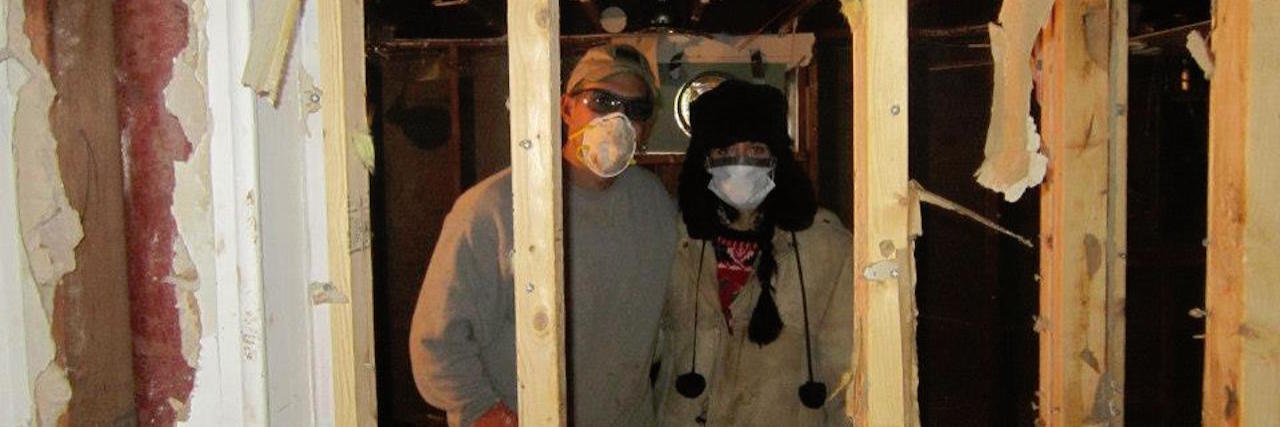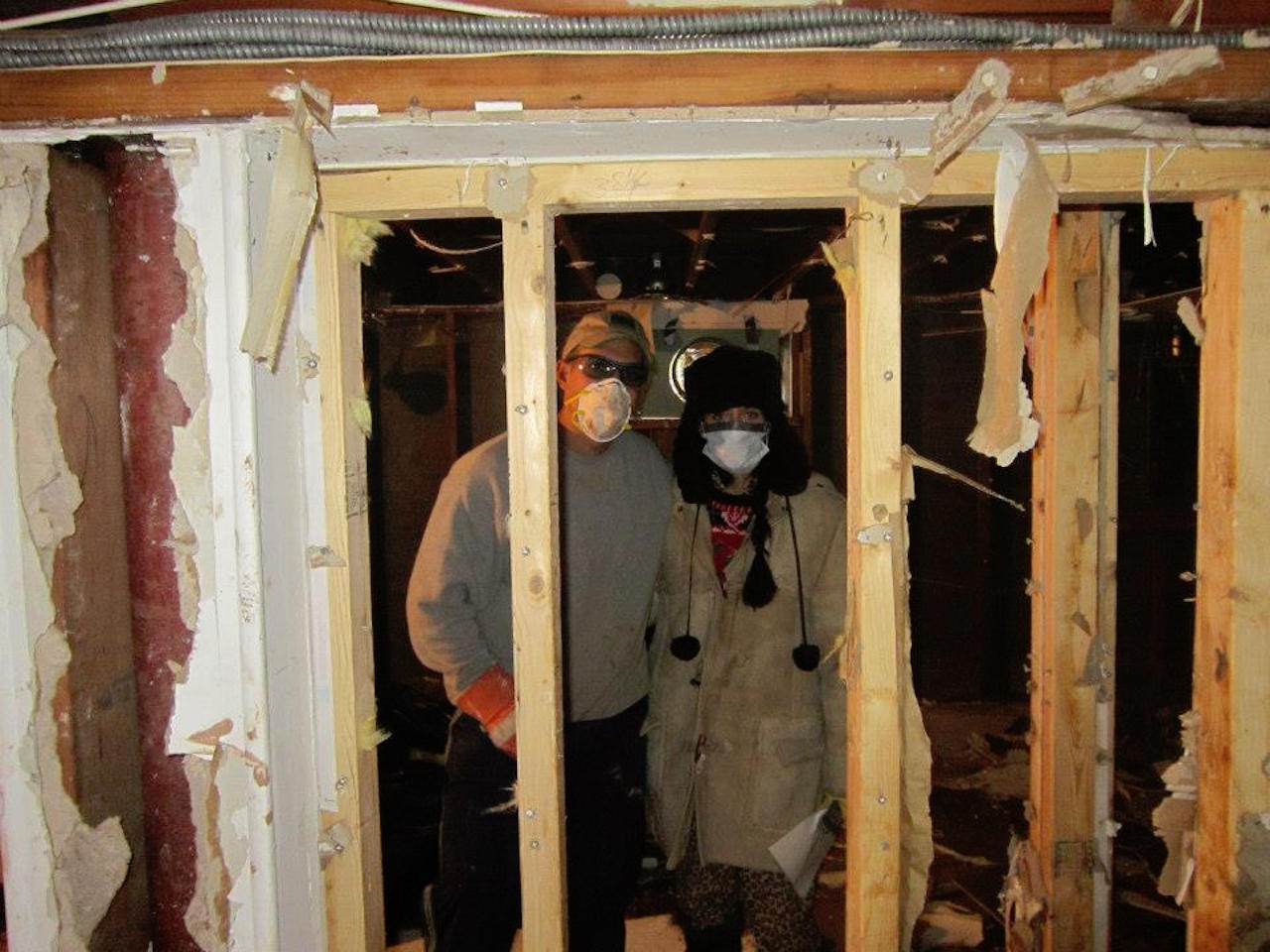I was born without a whole immune system and I survived the worst natural disaster to ever hit my community. Midland Beach, Staten Island, New York had more deaths per square foot than any other place touched by super storm Sandy – and I was smack in the middle of it. We did not evacuate but escaped our home once it started filling up with water. Here are a few things I learned from the experience. Many are for flooding disasters but some apply to any disaster.
1. If you are in an evacuation zone, evacuate. I know it’s hard. Especially when you are sick, have sick family members, pets, etc. But it is much harder to try to survive once an event is in progress and you are in the middle of it. If you are being evacuated it’s because you may be at risk. Please do not take this lightly.
2. Get all your prescriptions filled and try to anticipate anything that may happen with your doctor. Taking antibiotics once I was exposed to the flood waters of super storm Sandy may have saved my life. My mom did not take them and developed sepsis and we nearly lost her. Make sure all your vaccinations are up to date. I saw my doctor and got a tetanus shot before Sandy. The next few months we all got hurt and were exposed to so many things… I didn’t have access to medical care for the longest time; being vaccinated and having all the medications I needed was one of my many lucky breaks in the aftermath of the storm.
3. If you are staying or going, have all your medications and medical devices packed and ready to go should you need to leave. We had at least one neighbor die because she did not have her medication. Clothes, food and most anything else you need may be easier to replace after than your medications and devices.
4. If you have pets, include them in your plans and be sure to have food, cages, anything you need for them. Initial relief after a disaster will be for people, not pets, and it may be a long time before you can just go to a store and buy them food.
5. Charge all your devices but don’t expect there to be phone service, or even emergency service, available initially during a disaster. I was able to post on Facebook about trapped neighbors and the national guard did respond to my post. Later in my recovery I was able to get volunteers to help me using social media, so if your normal modes of doing things aren’t working or available, be creative.
6. As for packing: In a flood things you will need most besides your medicine are dry boots, towels, clean socks and lots of gloves. They may not be easy to get. As a primary immune deficiency patient, protecting hands and feet is very important since the environment can be very contaminated and dangerous. Prepare also to be living without electricity or any modern conveniences for an extended period. Think extreme camping on steroids. I had to gut and rebuild my first floor before I could get electricity back so it was a little less than two months before I could start living like a modern human. The weather was literally freezing and I did not have the right clothing. Luckily fellow PI patients send me a care package for dealing with the cold… including hand warmers and long johns. It’s something to think about when preparing your go bag.
7. If you are at risk for storm surge, the more valuable or needed an item, the higher it should be in your home. We were fairly horrified when we saw our generator and canned foods float away!
8. A preparing tip for valuables and essentials: Vacuum-sealed space bags keep water out normally, but in violent waters many will break. We always used Tupperware storage totes but they are no match for storm surge. Placing your most valued or needed items in space bags and then into storage containers – preferably ones with a locking device (or you can tape them closed) – is about your best chance of your things being dry should you be flooded. My items that were packed this way were clean and safe after Sandy. And space bags are not just for fabrics. You can put paperwork, photo albums, almost anything… so long as it doesn’t have sharp edges in them.
9. Don’t forget to take your medications and infusions on time. Your whole world will be upside down if your community is very damaged, but the only way to rebuild is to stay well. If you don’t self-infuse, be sure to set up a plan with your nurse or infusion center before the storm about what you will do or where you can meet. Keeping your immune globulin safe and the right temperature will be a priority.
10. Never use a generator in a house – fumes can kill you and if you are using any heating device don’t leave it unattended.
11. In the aftermath of a disaster everyone needs the same things and there will not be enough help or materials for everyone. Don’t be shy about sharing your story and special needs. It can help you get the help you need as soon as possible.
12. After Sandy I have to say it was such a huge mess we didn’t know where to begin. For flooding, the first thing you need to do is reach out to your insurance and/or FEMA. Next, everything contaminated needs to be removed from your home, including walls and wiring. You can photograph anything you are throwing out. Wear a mask and gloves at all times and do your best to cover and protect your whole body. You will need to restore electricity (replace all your wires exposed to flood water) before you can get mold remediation. Don’t skimp on electricity or professional mold remediation… either can be dangerous.
13. Follow all instructions of authorities. After a disaster there will be many hazards from fires to gas leaks to dangerous toxins in the air and water to horrible sanitary conditions. In everything you do, think and proceed with caution. In some cases you may not ever be allowed to even re-enter your home. Listen to the authorities and work closely with your neighbors. We did not enter our first floor until all the water had receded and we knew the electricity was off.
14. Work with your local and national organizations. While rebuilding our home I was able to advocate for sand dunes and a sea wall for my community and, on a national level, fair and affordable flood insurance. If damaged, as you rebuild think of rebuilding as safely as you can. We added many features to our home to make us more resilient. Let you and your community decide how you want to rebuild. You may not feel you have the power to decide but collectively you do.
15. Everyone handles disaster differently. Don’t be shy about asking for the help you need and there is no singular normal reaction to disaster.
16. Don’t be shy asking for help prepping for a storm. Boarding windows, sandbagging, removing anything that can fly in the wind can help prevent some costly and potentially dangerous damage. There are sandless sandbags you can buy that weigh less than a pound each so most people can use them. Also in the aftermath anything you physically can’t do, ask for help. It took some time but eventually we had volunteers literally from around the world helping our community. I ate donated food and wore donated clothes the first few months. A disaster is no place for pride. Accept any help you need and survive.
17. If you are renting and are damaged, you may want to consider relocating – at least for a while. Disasters are no place for anyone with health conditions if you don’t absolutely have to be there.
18. Government programs after Sandy were and still are not perfect. Many residents became so discouraged they opted out. My tip is to consider it like the lottery – you have to be in it to win it, but just don’t have any particular expectation. Stay in it even if they lose your paperwork a dozen times and it seems all you are getting is a run-around. Stay in it even if what they are asking or expecting makes no sense. Stay in it even if it drags out for what feels like forever. In the end you may get some help, but if you give up you won’t.
19. If available, get a case manager to help you apply for programs for disaster survivors. If nothing else, you won’t feel like you’re doing it alone, and a case manager can help keep everything organized and advocate for you. I will always remember ours fondly. She even helped to replace some medical equipment for my mom that her health insurance would not.
20. They tell you to fill a tub with water, but in a surge situation sewage can back up from all your plumbing – sinks, toilets and tubs. I don’t think it’s a bad idea to bottle a few days worth of tap water too. I keep water purification tablets and filters on hand too. We have one filter that attaches right to the sink. Another is a straw that is used in third world countries. Spring water deliveries cost less than you might think and we also have regular bottled water deliveries so we always have an alternative water source. Listen to authorities about how to handle drinking water and try not to even drink filtered water until you know its safe.
21. In the aftermath of disaster you will see both the best and the worst in humanity. It was a real learning experience for me. I try to focus on the good that came of it and I have many new friends who are truly great people that I may not have meet if not for super storm Sandy.
We want to hear your story. Become a Mighty contributor here.


